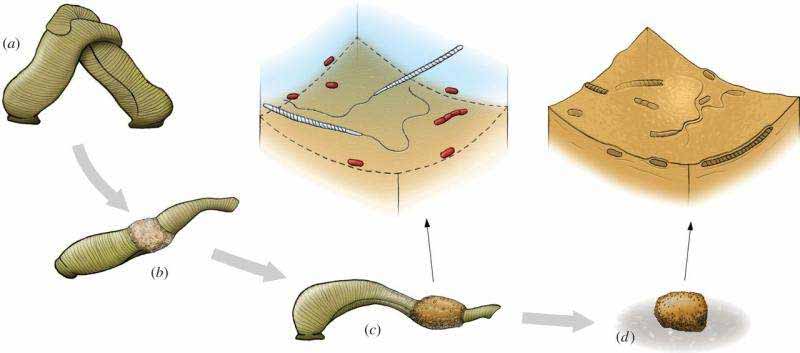

50 million year old sperm cells found in fossilized cocoon PhysOrg - July 17, 2015
A small team of researchers with members from institutions in Sweden, Argentina and Italy, has discovered fossilized sperm cells embedded in the walls of an ancient cocoon. In their paper published in the journal Biology Letters, the group describes how they came across the sperm fossils while studying a 50 million year old cocoon found on Seymour Island in Antarctica. It is very rare to find fossilized examples of sperm cells because they are soft-bodied - they have no bones. Prior examples have mostly been found in amber.
The fossils found by the researchers in this new effort were discovered by accident—the researchers were merely studying the intricacies of a fossilized worm, or leech (of the class Clitellata) cocoon they had found on the island to learn more about the creature that left it behind. In making their cocoon, the ancient worm would have applied jelly-like material to the walls, which would remain in that state for just a couple of days—sperm would have been deposited inside as a means of fertilization, and in a few cases become embedded in the cocoon wall, where it then became fossilized after the walls hardened.
The fossilized sperm cells are tiny of course, just 60 micrometers long and resemble those of modern crayfish worms, the team reports, which is odd, because modern crayfish worms live only in the northern hemisphere. They have elongated head areas, a central region that holds the nucleus and extremely long tails. Dating has placed the age of the cocoon and its contents at 50 million years, which means the discovery is the oldest sperm cells ever found, by a margin of 10 million years.
ANCIENT AND LOST CIVILIZATIONS